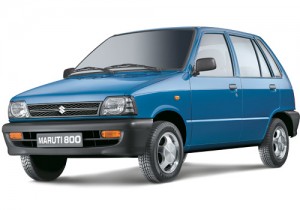The economic slowdown in the BRICS economies and indeed the emerging markets at large are posing a problem, particularly so for MNCs, as they eye rural markets for growth. MNCs, particularly, developed market MNCs, are by and large ill-poised to win in these markets.
Consider the automotive market in India. No developed market car maker has a market share greater than 6% of the Indian market; indeed the only foreign car maker with a greater share is Hyundai, an EMNC. In comparison, India’s Maruti has a 30%+ share of the market and over 30% of Maruti’s sales come from population centers with less than 10,000 people. Thus, in the rural markets, the incumbent brand and the one to beat is a domestic brand that over the past several years has been successful in defending its market position. India’s Mahindra and Mahindra is also a strong player in these markets with its robust SUVs.

Besides being the incumbent with a long and credible history, a key advantage that enables the likes of Maruti to defend their market position, particularly in rural markets is its extensive distribution system; Maruti has some 1300 dealerships across India. In comparison, Honda hopes to have 170 by the end of the current financial year while GM, which has been in India for almost 20 years now has less than 300!
That distribution plays a key role in building and sustaining a brand, particularly in rural markets, is undeniable. Consider the case of LG, again in India. It entered India late, in 1997, after all the global majors it competes with, e.g., Samsung, Whirlpool, GE, and Sony, were already in India. Yet, in a short span of 5-years, LG had catapulted to the number 1 spot in refrigerators, air-conditioners, and TVs. It did so by rapidly building sales offices around the country. While the companies it competed with had around 20 sales offices around the country LG had over 100. This support helped it to gain retail presence in over 15,000 outlets around the country and to be able to offer rapid response when it came to service. It has since complemented its retail footprint with its flagship LG Shoppes, which now number over 700 across India.
So, what’s the message? As MNCs eye and salivate over rural markets in the emerging economies, they need to step beyond the bigger population centers where they feel more comfortable. They need to build a deep and robust presence in rural distribution, through setting up offices through which to support a retail network. Only then can they hope to take a share of this potentially lucrative pie.


